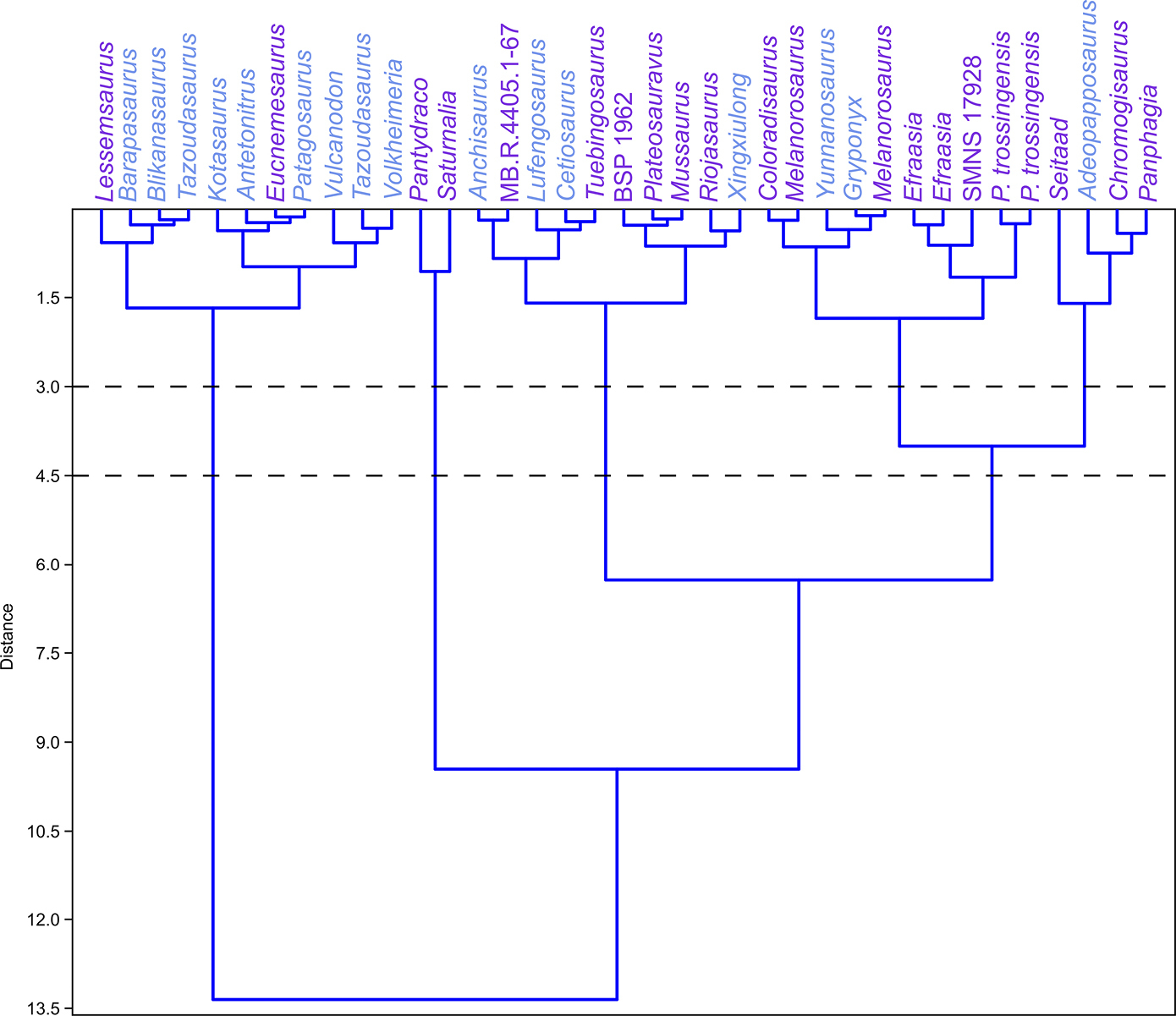
|
||
|
Ward clustering of two variables: the ratio between the total length and anteroposterior depth of the proximal end of tibia (L/Pw), and the ratio total length and anteroposterior depth at mid-length of tibia (L/Mw). Efraasia and Plateosaurus (neotype, SMNS 13200, and referred specimen GPIT-PV-30784) are in the same clusters. The other specimens referred to as Plateosaurus, i.e., MB.R.4405.1-67 and BSP 1962, and Tuebingosaurus are clustered with other massopodans such as Mussaurus, Riojasaurus, and Anchisaurus. The two larger clusters (at distance = 12) almost clearly separates the morphology of the tibiae into Late Triassic (purple) and Early Jurassic (light blue) specimens, which is consistent with separating sauropodan morphotypes from early-sauropodomorph ones. Analysis was performed in PAST 2.03 (Hammer et al. 2001). Cophenetic correlation coefficient: 0.5611. |